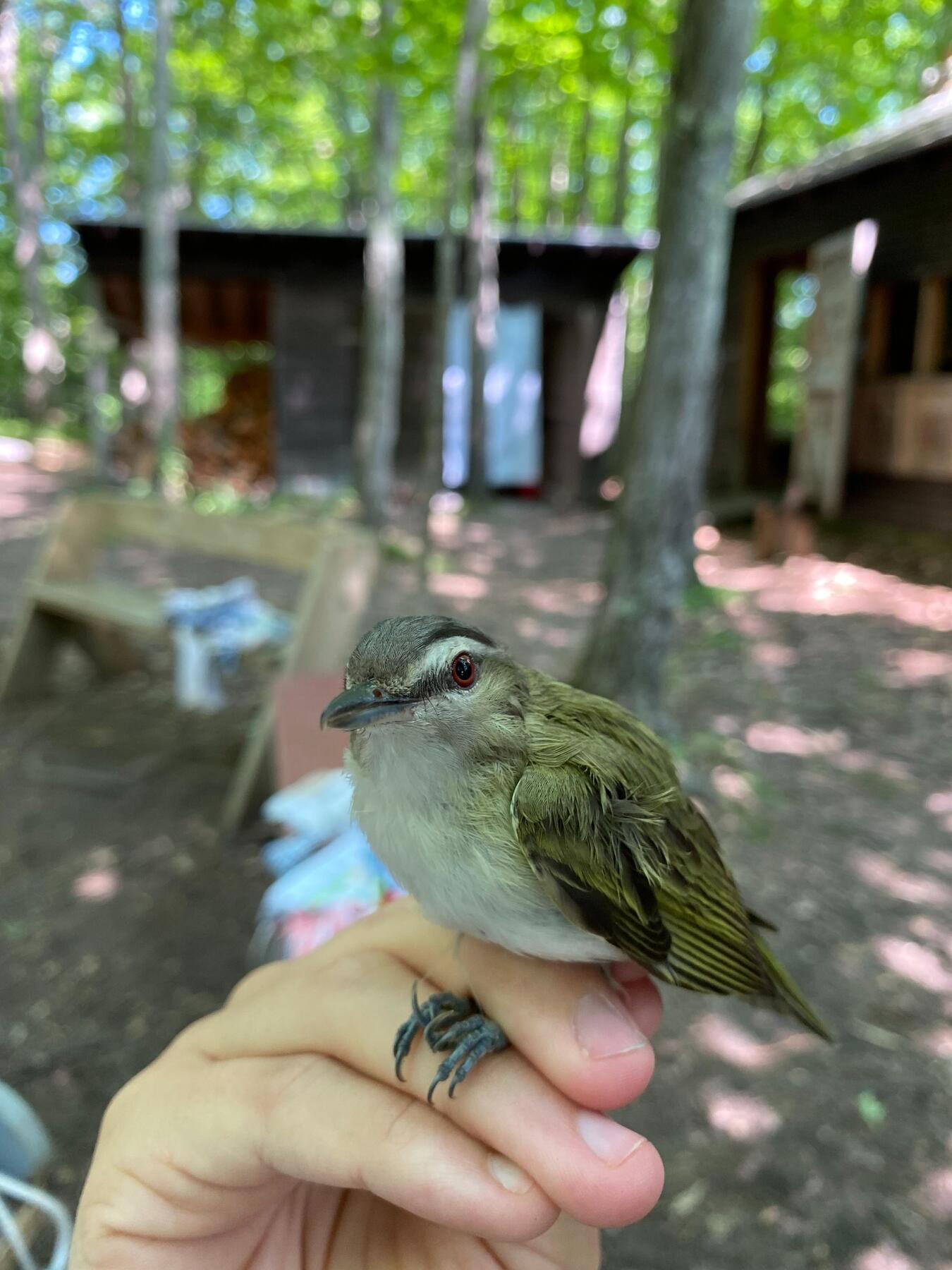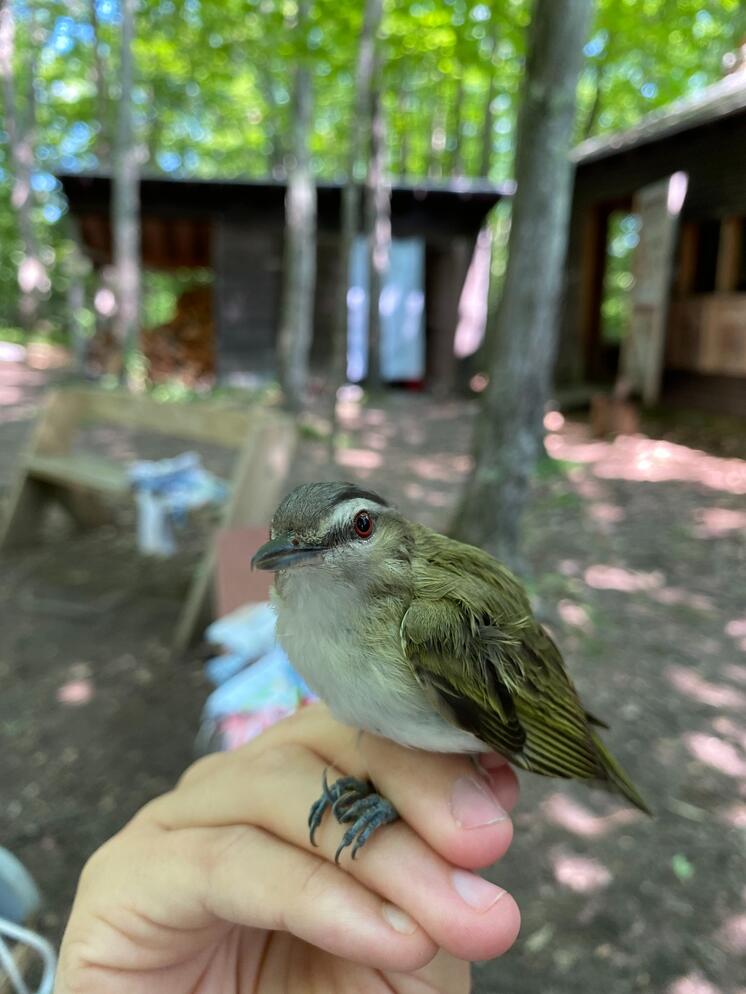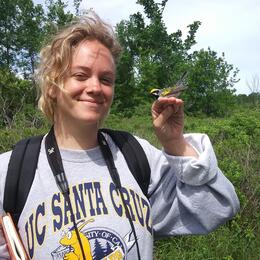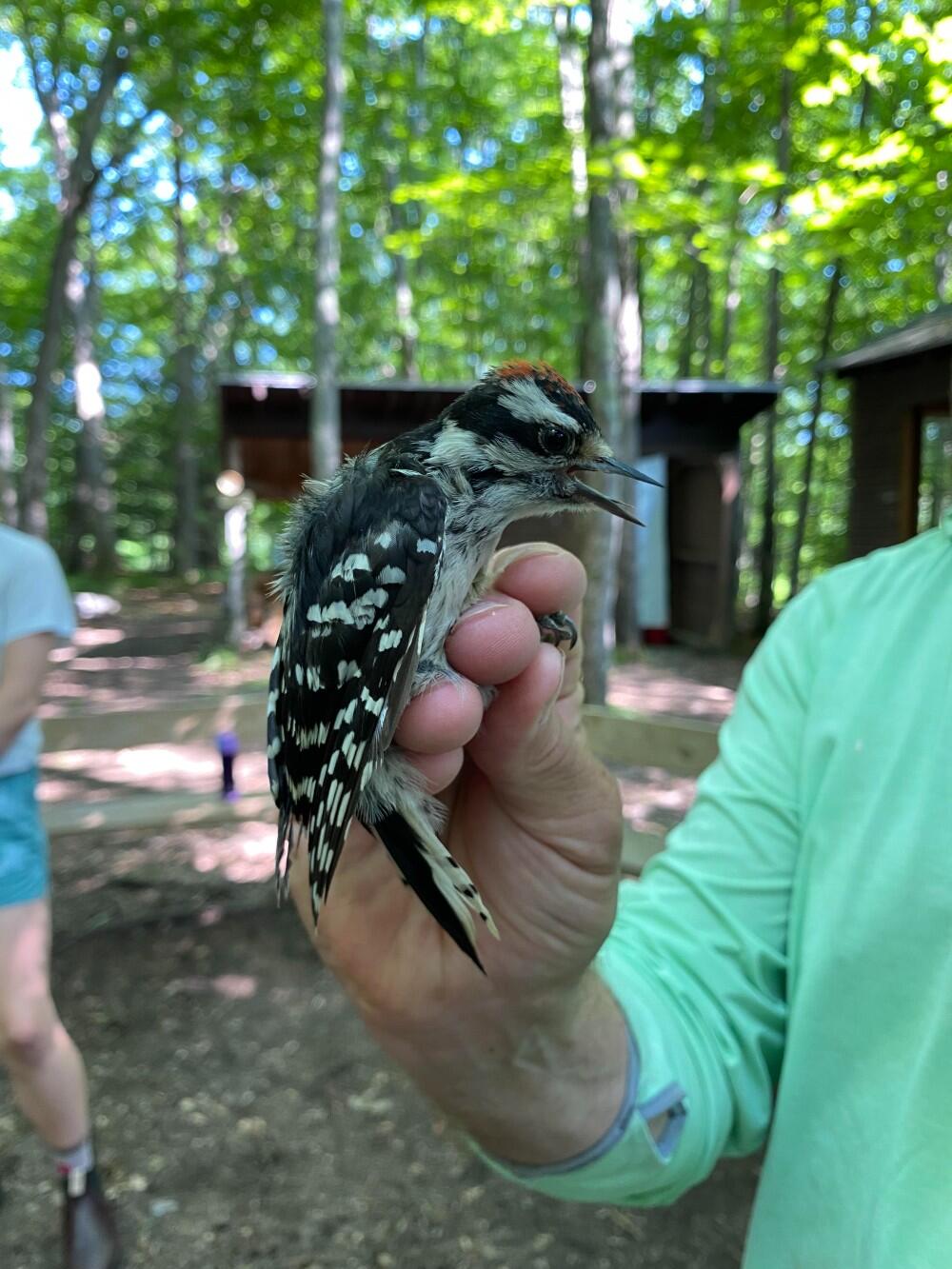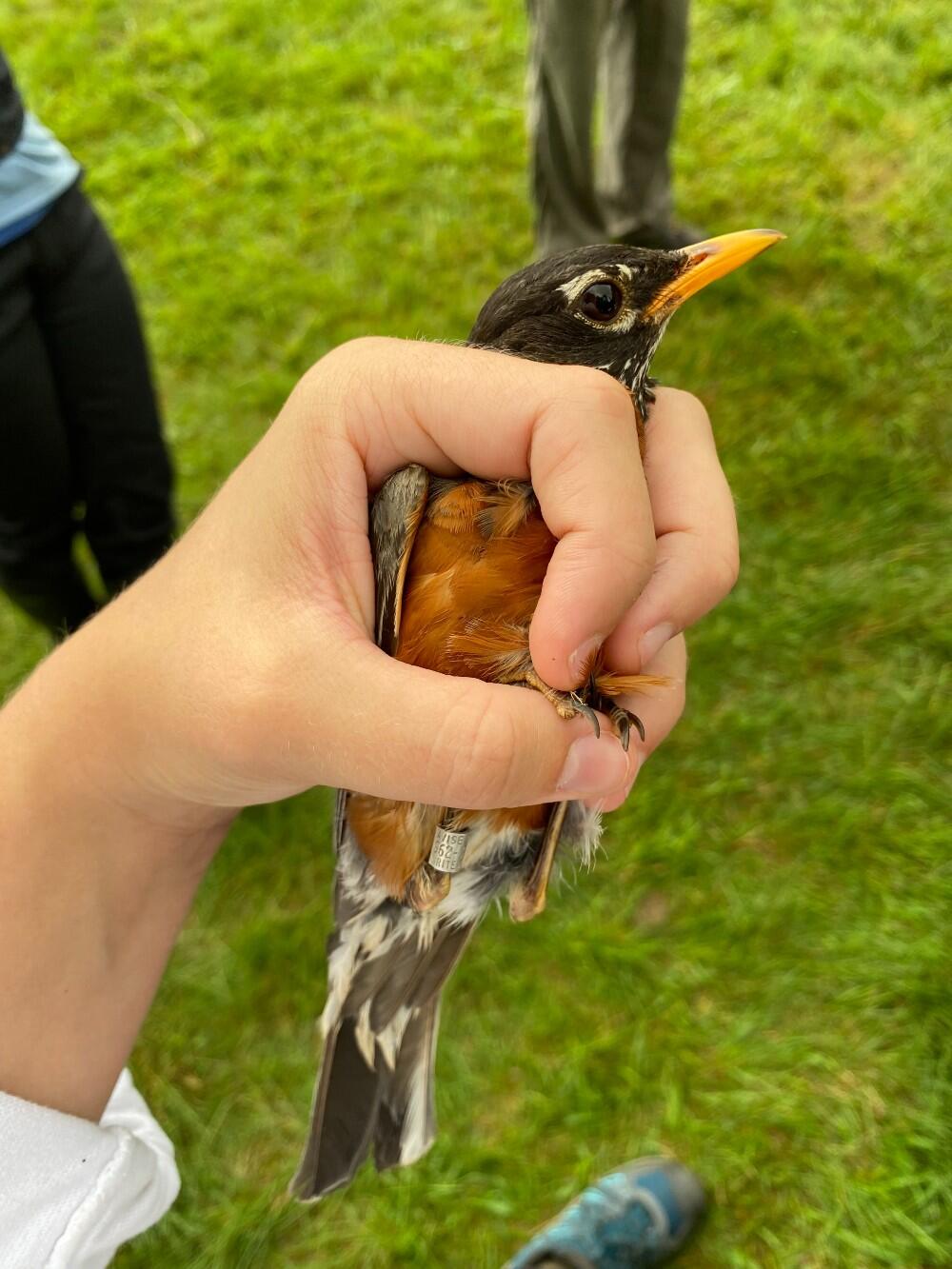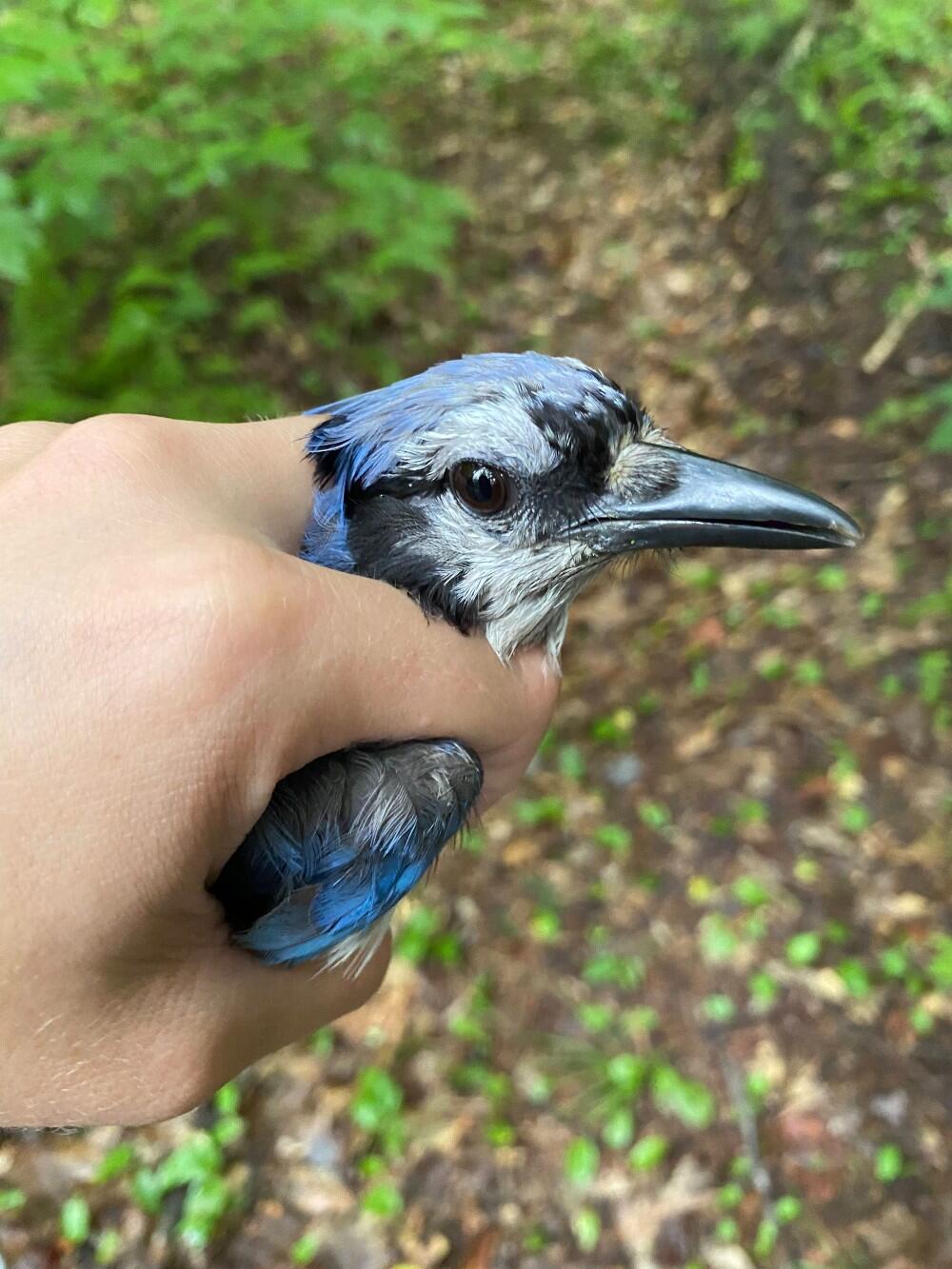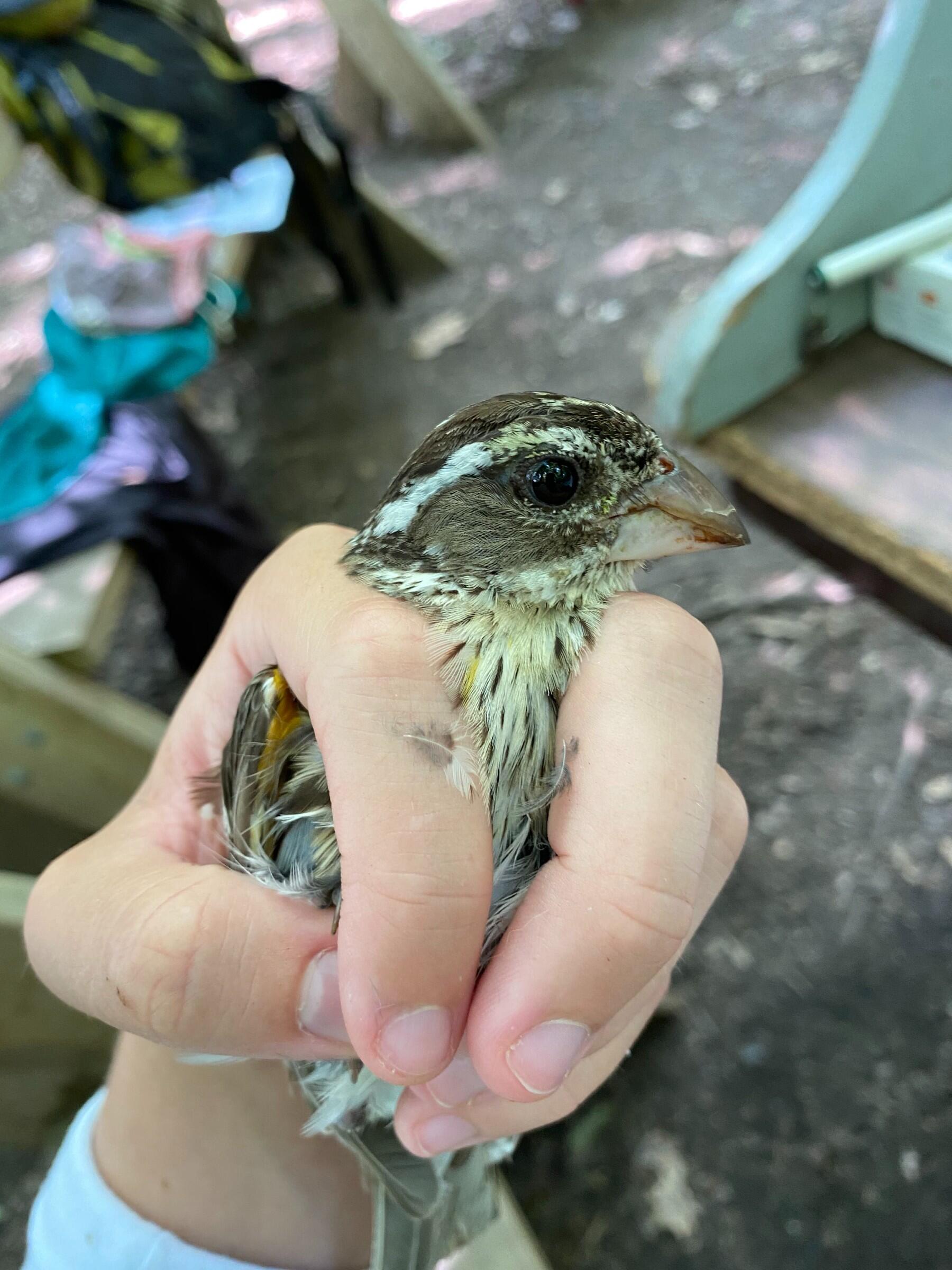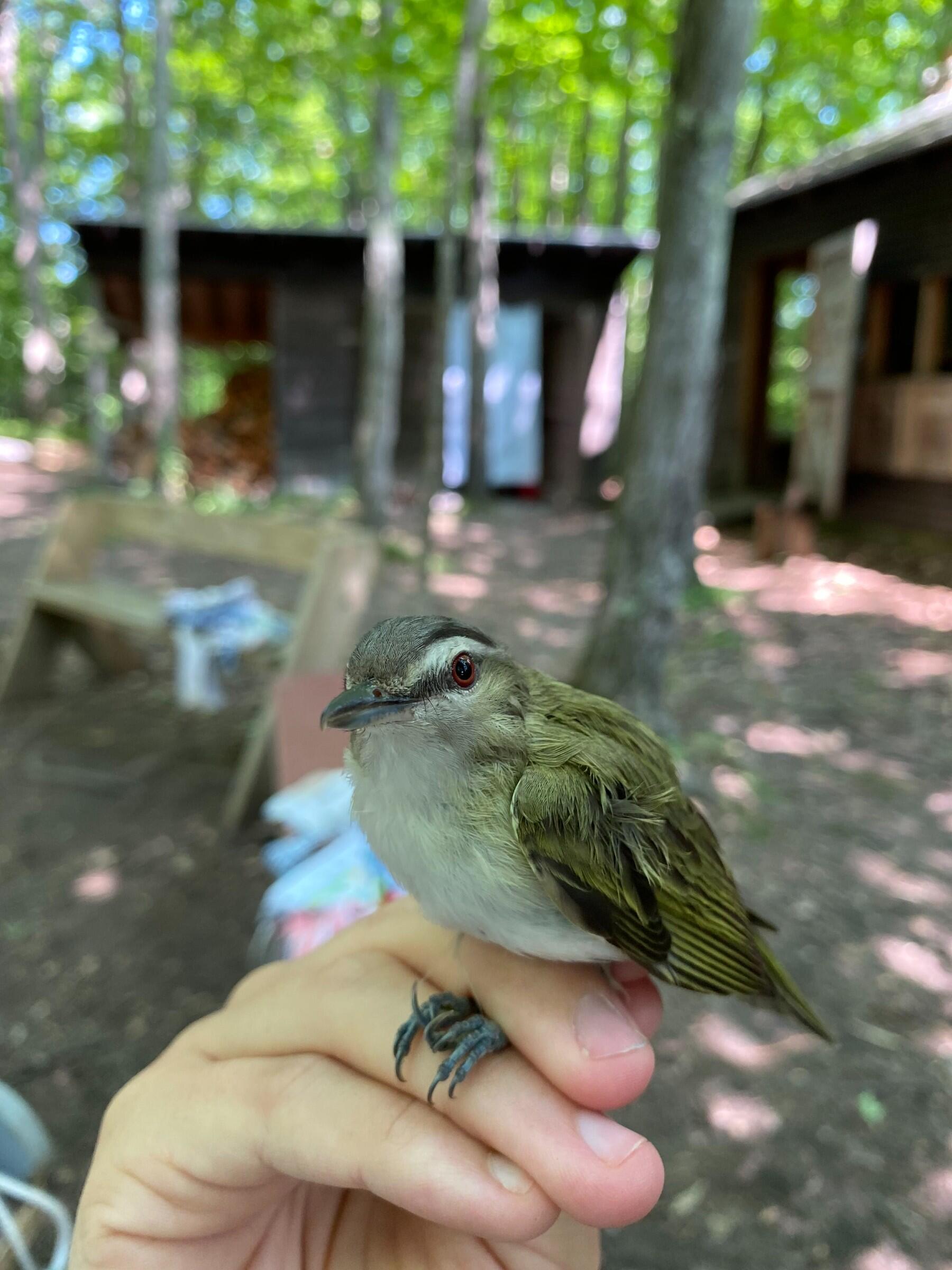Audubon Vermont hosts conservation, education, and policy interns every semester. Interns provide an intern's-eye view of the exciting and important work being done by Audubon Vermont every day. Fiona McCarthy is one of Audubon Vermont's Conservation Interns for the summer of 2021. Check out our intern page for more information and stories!
Birding is often simple - a slow act of waiting, listening, and looking for what could possibly surround you. On a regular day birding in my neighborhood, I’ll hear a Black-capped Chickadee or catch a quick glimpse of red flashing past my eyesight. These moments are fleeting.
Banding birds is different. While banding, the moments that I share with any certain bird feel timeless. Of course, they will eventually wiggle their way out of my hand and be released back among the trees, but the intimate time that I spend holding each bird feels significant. These birds have stories to tell. Many have traveled incredible distances to breed and continue the cycle of their lives right here in Vermont.
Working at the banding station at Audubon Vermont in Huntington is easily the most fascinating experience that I have ever had in Vermont. This station is one of over 1,200 that have spread across the US and Canada since 1989, making up the entire MAPS network. The MAPS program, otherwise known as Monitoring Avian Productivity and Survivorship, collects data on the sex, age, condition, and reproductive status of birds in order to further our understanding of the underlying causes of avian population trends.
About once every week during the breeding season, mesh nets are set up along the trails at the Green Mountain Audubon Center. I make my journey to the center on these mornings with a mug of coffee in hand and an eager attitude to discover which birds will fly into the nets that day. The early fog blankets the hills that lead me to the Audubon, and I often roll down my car windows to listen for bird songs that I can identify. In the early hours of the morning, Mark LaBarr, bird bander extraordinaire, meanders out along the trails to set up mist nets that catch our birds throughout the banding session.
As soon as I arrive to the site, Mark, fellow intern Gus Lunde, and I head out on a "net run" to collect any birds that have been caught. We follow an established route, stopping at each net to check for birds. When we stumble upon a bird caught in one of the nets, it takes patience and precision to take it out. The mist nets are made of nylon mesh and are difficult to see on cloudy mornings, making it easy for birds to accidentally swoop in and become caught. I carefully unravel the bird’s feet, wings, and head then safely deposit the bird into a small, cotton bag. We continue our net run like this, sometimes collecting up to 10-12 birds on a single run.
After perusing the entire net route, we return to the banding station and begin the banding process. Setting up the bird banding station involves organizing our materials, from banding pliers to wing rulers, and hanging the bags from hooks above my head as they twitch every few minutes from the birds inside.
Over the course of the summer, I pull a plethora of different birds out of these bags, from sparrows to woodpeckers to warblers. I use the trusty “banders grip”, two fingers carefully around the neck of the bird and the others acting as a gentle cage to keep it from escaping.
I frequently band Veeries this summer. Veeries are warm-colored thrushes that breed in deciduous forests like the rich woodland area that makes up the trails at the Green Mountain Audubon. Their beautiful, spiraling “veerr veerr veerr” song can be heard along the trails throughout the breeding season. Upon pulling a Veery out of a bag, I first work on identifying the bird. To identify a Veery, one can look to the faint spots on the upper breast, pale underparts, narrow bill, and indistinct pale grey eye-ring. Unlike Hermit Thrushes that have duller brown backs, Veeries are uniformly reddish-brown.
Once I correctly identify a bird, I select the proper band size, as they vary between species. Using pliers, I carefully secure a metal band around the bird’s foot. Each band has a number sequence that is copied down on our datasheets to keep track of the individual bird. Next, I work on recognizing the sex of the bird. During breeding season, females have a distinct brood patch on their abdomen, a featherless patch that is used for egg incubation. Males have an enlarged cloacal protuberance.
After identifying the sex of the bird, I move on to the age. One distinct characteristic that helps me identify age is the shape of a bird’s tail tips. If the tips of the tail feathers are pointed and unworn, the bird can be identified as younger because the feathers are relatively new and recently molted from the juvenile nest feathers. If the tail feathers are square, or truncate, the bird is most likely older because adults do not molt all their tail feathers at once and they will look relatively worn.
After aging and sexing a bird, I move on to getting some basic measurements including wing length and weight. Other characteristics such as flight feather wear and molt are also noted on our datasheets. Once all the data is collected, I let the bird go, freshly banded and back into the forest to continue its lifecycle. After banding every bird from one net run, the team heads back out on another net run to continue the cycle of a banding session.
While collecting data and surveying birds is very fascinating, it is the intimate experience of holding a bird and looking it so directly in the eye that makes the experience of banding truly special. I feel incredibly lucky to be able to partake in such a special sector in the realm of wildlife conservation.
I banded birds this summer that I had never seen in person before, such as the Black-throated Blue Warbler and the Cedar Waxwing. Even interacting with birds that are typically commonplace like Northern Cardinals, American Robins, and Blue Jays was very eye-opening and I can confidently say that I have an increased appreciation for these species.
We caught birds this summer that already had small silver bands around their feet, signifying their return to Audubon and a successful year in their lifecycle. The data that we collect from these birds is incredibly impactful to understanding them on a scientific level and goes on to inform many conservation decisions. However, I found that I garnered the greatest understanding of the birds that I banded through being able to peer through an up-close and personal window into their lives. I learned countless lessons this summer from the delicacy and resilience that birds embody.

